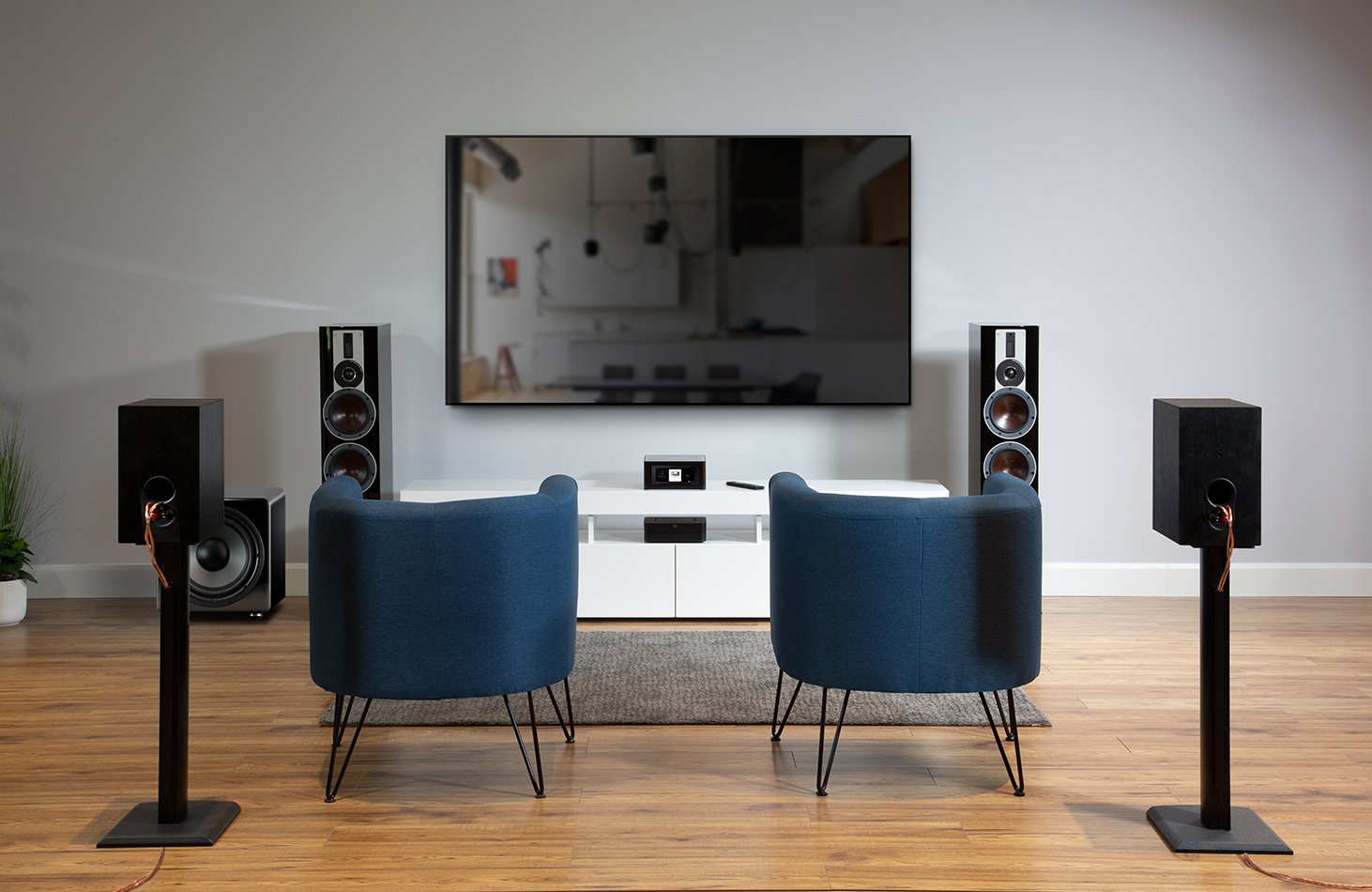Time for another edition of Tip Tuesdays! For any new subscribers, Tip Tuesdays is a newsletter series where we provide you with tips and tricks to help you get the most out of your equipment and setups, as well as fun facts and information about various topics in the field of audio, specifically premium audio.
Whether you're an audiophile looking to optimize your sound quality or a casual listener seeking to improve your audio experience, our team of experts will provide recommendations and insights on various topics.
The trend of investing in home theatres is on the rise, but people often associate it with extravagant setups in celebrity mansions. However, building a home theatre doesn't have to be expensive, and it's accessible to everyone, not just celebrities. It can be a rewarding investment, providing an ideal space for family movie nights and safe entertainment for kids and their friends.
Although some may worry about costs and space, there are ways to create a home theatre without breaking the bank. The edition of Tip Tuesdays offers expert advice and tips to help you navigate the process, avoiding crucial mistakes when building your own home theatre.

1) Room Selection and Seating
The key to an excellent home theatre experience lies in the choice of the room. Avoid rooms with excessive windows and openings, as they can lead to acoustic issues. Opt for a square or rectangular room with minimal natural light and outside noise. Ensure it's large enough for proper seating and viewing distance. Isolating outside sounds is crucial for optimal sound quality. Additionally, consider the door's location in the room layout to prevent disruptions during the movie.
By selecting the right room and following these considerations, you can achieve a chest-thumping and immersive home theatre experience with top-notch audio and video quality.
2) Speaker Placement and Purchase
Choosing the right speakers is crucial for a home theatre, but many people make common mistakes. Instead of selecting speakers suitable for their room design, some overspend on high-quality ones. It's essential to consider the room size and requirements before purchasing speakers. Large floor-standing speakers may not be suitable for small rooms as they take up space and affect sound quality. Surround sound, though enhancing the experience, might not always be feasible, especially in limited spaces.
Proper speaker placement is vital for optimal surround sound effects, and using speaker brackets can help direct the sound toward the desired seating position, creating an amazing theatre experience in the room.
3) Cables and Wiring
One common mistake that can negatively impact your home theatre experience is not allocating enough budget for essential wiring accessories such as cables and surge protectors. While some may assume that the cables included with their home theatre equipment are sufficient, it's important to invest in more durable options for better performance and longer protection. However, this doesn't mean spending excessively on high-priced cables. Instead, opt for HDMI cables that comply with the latest speed standard and consider 16 or 18 gauge thickness wires for speakers.
Neglecting to invest in a reliable surge protector can lead to equipment damage during power surges. Additionally, ensure that no live wires are left exposed beneath the seats. While it may be tempting to rely on free cables, they often lack quality and can impact the overall performance of your home theatre. Allocating a portion of your budget for good-quality cables is a worthwhile one-time expense that enhances the entire viewing experience.
4) Screen Size
To ensure a lifelike and immersive viewing experience, it's essential to consider the proper placement and size of the TV or display screen. The optimal viewing distance should be approximately 1.6 times the size of the screen's diagonal measurement. For instance, a 55" TV would require a seating distance of 88" or 7'4". It's crucial to take into account the resolution and viewing distance, as sitting too far can negate the benefits of higher resolutions.
A screen that covers your field of vision completely is necessary for a cinematic experience, neither too big nor too small. Sketching the screen size with a pencil and positioning it at the centre can help determine if the screen is suitable for creating an amazing viewing experience.

5) Budgeting
When building a home theatre, it's essential to avoid overspending on so-called "best products" in the market, as extravagant features may not significantly impact video and audio quality. Instead, focus on understanding the features you're paying for and consider less expensive versions of components, which can work just as effectively. However, under-budgeting should be avoided, as compromising on quality could lead to equipment failures and dissatisfaction with the final result.
Strive for a balance between investing in quality products and finding good deals. Save money for future upgrades instead of spending unnecessarily at the outset of the project.
Conclusion
In conclusion, building a home theatre can be an exciting endeavor, but it's crucial to avoid common mistakes to ensure an exceptional cinematic experience. By selecting the right room, considering acoustics, and planning a proper budget, you can lay a solid foundation. Pay attention to speaker placement, screen size, and seating arrangement to optimize audiovisual immersion.
Invest in quality wiring accessories, such as cables and surge protectors, to safeguard your equipment and enhance performance. Find a balance between spending wisely and prioritizing quality components. Lastly, keep in mind future upgrades and save accordingly. By avoiding these mistakes and following expert advice, you can create a home theatre that brings years of enjoyment and entertainment to you, your family, and your friends.
Thank you for reading through our newest edition of Tip Tuesdays. We hope you enjoyed it. Don't forget to visit theaudiofactory.com for all your audio needs and start building your new home theatre today! Keep an eye on your inbox for the next edition of Tip Tuesdays!






Comments (0)
There are no comments for this article. Be the first one to leave a message!